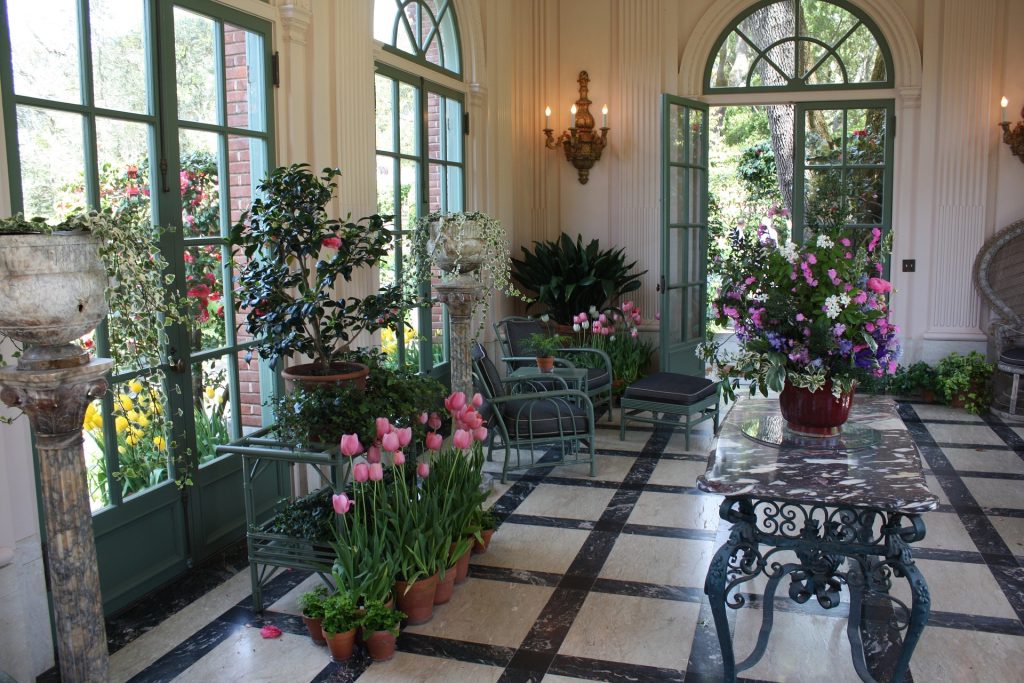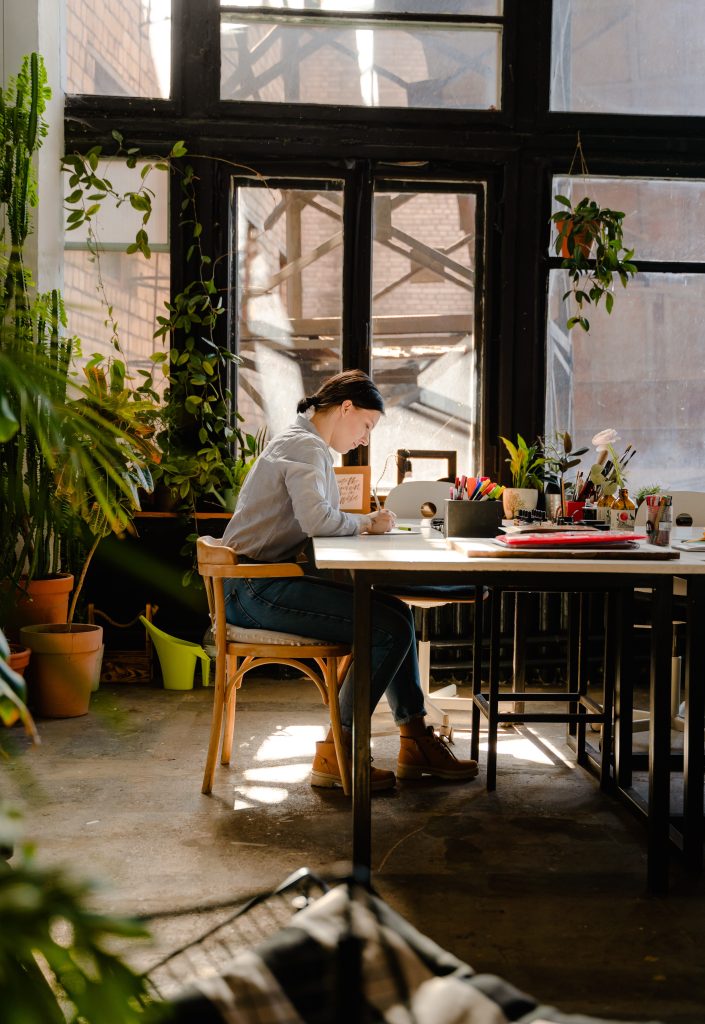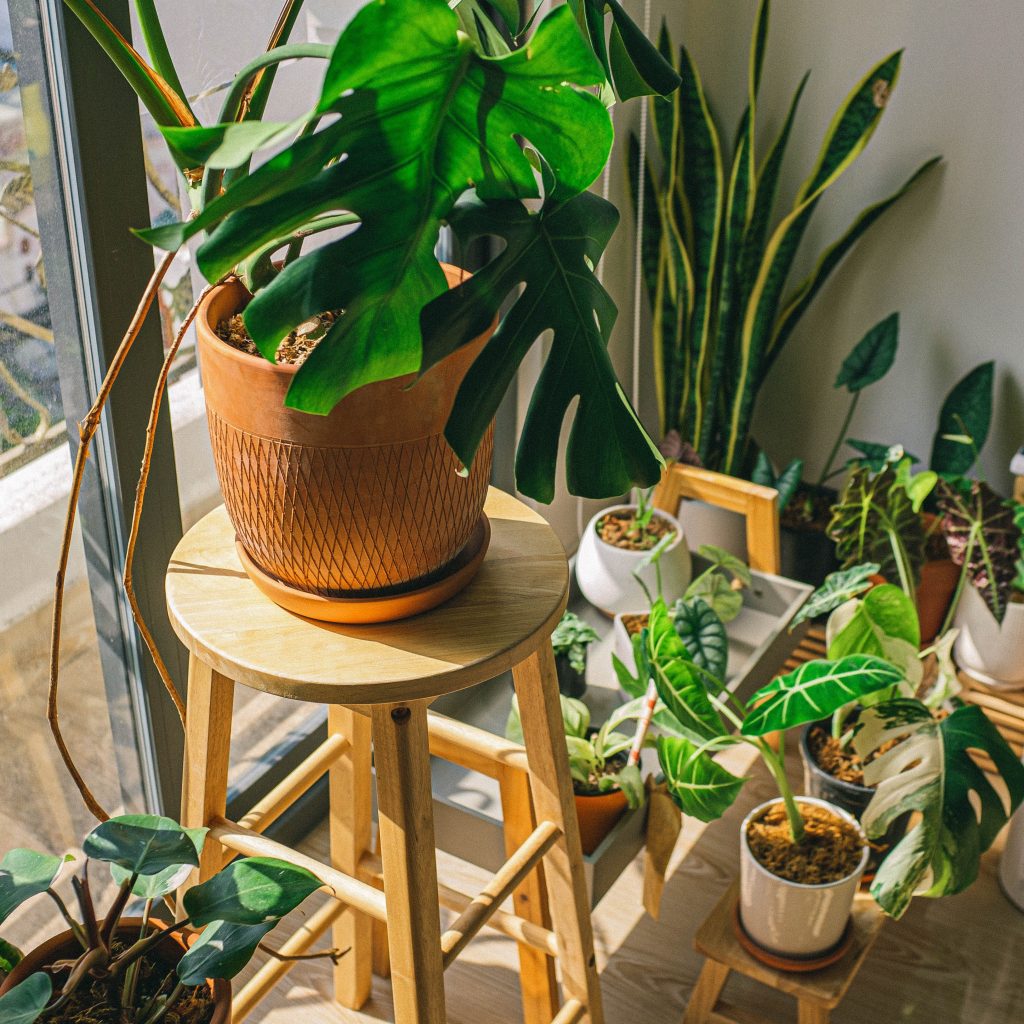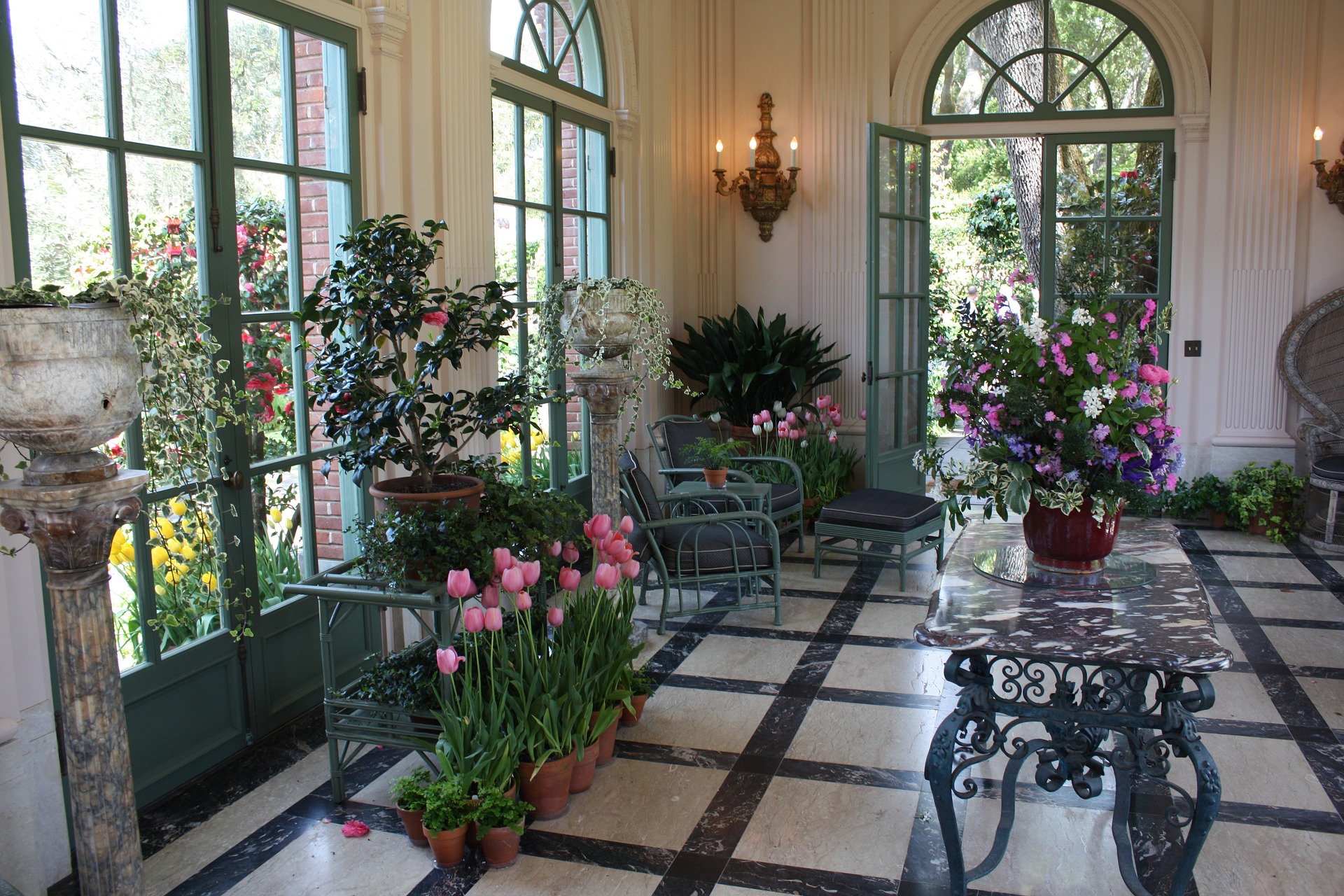Indoor garden rooms have become increasingly popular in recent years as people seek to bring nature into their homes and create a calming, beautiful space to relax in. These indoor garden rooms are designed to provide all the benefits of an outdoor garden, but in the comfort of your own home. This is a great advantage if you live in a country where the weather is – how shall I put it – not entirely reliable! An indoor garden room can be a tranquil oasis that helps to reduce stress and promote well-being.
Table of Contents
What is an indoor garden room?
An indoor garden room is a dedicated space within your home designed specifically for growing plants and creating a garden-like atmosphere indoors. It is typically a room with windows or skylights to allow natural light in, but may also include artificial lighting to supplement these natural light sources.

Indoor garden rooms may be designed with features that mimic outdoor gardens, such as soil beds, trellises, and even fountains. They can be used to grow a variety of plants, including flowers, herbs, vegetables, and even small trees.
Indoor garden rooms can be customized to suit a variety of personal styles and preferences, from modern and minimalist to rustic and bohemian. They are a great way to bring the beauty and benefits of nature indoors, and can be particularly useful for those who live in urban areas or have limited outdoor space. With proper care and attention, an indoor garden room can provide a peaceful and serene retreat that enhances both physical and mental well-being.
Types of indoor garden room
There are many different styles of indoor garden rooms to choose from, including minimalist designs with sleek, modern furniture, or more rustic rooms with natural materials like wood and stone. Some garden rooms are designed for specific purposes, such as meditation or yoga, while others are simply a place to sit and enjoy the beauty of nature.
Whether you have a green thumb or are new to gardening, an indoor garden room can be a wonderful addition to your home. With a little planning and creativity, you can create a space that brings joy and relaxation to your daily life.
The benefits of indoor garden rooms
There are many benefits to having an indoor garden room, both for your physical health and mental well-being.
- Improves indoor air quality: Plants are natural air purifiers, and can help to remove toxins and pollutants from the air in your home. Certain plants, such as peace lilies and spider plants, can help to remove harmful chemicals from the air.
- Reduces stress and anxiety: Being in nature has been shown to have a calming effect on the body and mind, and even just looking at plants can help to reduce stress levels and improve mood.
- Boosts creativity and productivity: Having plants in the workplace can help to improve mental focus leading to increased productivity and creativity.
- Having an indoor garden room can provide a sense of accomplishment and satisfaction, as well as a feeling of connection to nature. Being surrounded by plants can make you more relaxed and calm.
Creating an indoor garden room
When designing an indoor garden room, there are several key factors to consider to ensure that your space is functional, beautiful, and meets your specific needs. Here are some important factors to keep in mind:
- Temperature and humidity: Plants also require a specific temperature and humidity range to grow successfully. Make sure your indoor garden room is well-ventilated and has proper temperature and humidity controls to create the optimal growing environment.
- Lighting: One of the most important factors to consider when designing an indoor garden room is lighting. Plants require adequate light to grow and thrive, so it is important to choose a space with plenty of natural light. If your space does not have sufficient natural light, consider incorporating artificial lighting to supplement it such as the FECiDA 600W LED Dimmable Grow Light unit.
- Plant selection: When choosing plants for your indoor garden room, consider your space, lighting, and your personal preferences. Some plants require more light than others, while others may be better suited to lower light conditions. Choose plants that are well-suited to your space and that you will enjoy caring for and looking at.
- Soil and drainage: Adequate soil and drainage are also important factors to consider when designing your indoor garden room. Choose a high-quality compost that is appropriate for the plants you are growing, and make sure your planters have proper drainage to prevent water buildup and root rot.
- Design and decor: Finally, consider the overall design and decor of your indoor garden room. Choose furniture and decor that complements your plants and creates a welcoming, relaxing space. Incorporate seating areas and pathways to make your space functional and enjoyable.
By considering these key factors when designing your indoor garden room, you can create a space that is beautiful, functional, and well-suited to your specific needs and preferences.

Choosing plants for an indoor garden room
Selecting the right plants and arranging them in an aesthetically pleasing way are important considerations when designing an indoor garden room. Here are some tips to help you choose the right plants and arrange them for maximum visual impact:
- Consider your space: When selecting plants for your indoor garden room, consider the size of the space, the amount of natural light, and the temperature and humidity levels. Choose plants that are well-suited to your specific space and that will thrive under the conditions you can provide.
- Mix and match: To create visual interest and depth in your indoor garden room, consider mixing and matching plants with different colors, textures, and sizes. Choose plants with different foliage colors and textures to create a layered and visually appealing display.
- Create contrast: To create contrast and add interest, consider pairing plants with different shapes and sizes. For example, pair tall, spiky plants with low, spreading plants for a dynamic and visually interesting display.
- Use containers wisely: Choose containers that complement your plants and the overall design of your indoor garden room. Consider using containers in different shapes, sizes, and materials, such as terra cotta, ceramic, or woven baskets, to create visual interest.
- Think about maintenance: When selecting plants for your indoor garden room, consider how much maintenance they will require. Choose plants that are well-suited to your lifestyle and that you will be able to care for properly. Make sure that you place plants where you can access them to water, prune and clean.
By following these tips, you can choose plants that are well-suited to your indoor garden room and arrange them in a way that is both visually appealing and functional. With proper care and attention, your indoor garden room can provide a peaceful and beautiful retreat that enhances your overall well-being.

Using your indoor garden room
An indoor garden room can be used in a variety of ways, depending on your needs and preferences. These are just a few ideas for how you can use your indoor garden room:
- Relaxation space: An indoor garden room can be a peaceful retreat where you can relax, read a book, meditate, or simply enjoy the beauty of nature.
- Work or study space: If you work from home or need a quiet place to study, these rooms can provide a calm and inspiring workspace.
- Exercise space: Consider using your indoor garden room as a yoga or exercise space. The fresh air and greenery can help to create a calming and invigorating environment.
- Entertaining space: An indoor garden room can also be a great space for entertaining guests. Use it as a unique backdrop for dinner parties, or host a small gathering surrounded by lush greenery.
- Greenhouse: An indoor garden room can also function as a mini greenhouse, allowing you to grow a variety of vegetables, fruits and herbs year-round.

Conclusion
In conclusion, indoor garden rooms are a wonderful addition to any home or building. They offer numerous benefits, including improving air quality, reducing stress, and increasing productivity. Designing an indoor garden room requires careful consideration of factors like lighting, temperature, humidity, and ventilation, as well as selecting the right plants for the space. Indoor garden rooms can be used for a variety of purposes, from growing herbs and vegetables for cooking to creating a relaxing oasis for meditation or reading.
With the right planning and attention, an indoor garden room can be a beautiful and functional addition to any space. So, if you’re looking for a way to bring nature indoors and create a peaceful and inspiring environment, consider designing your own indoor garden room.
